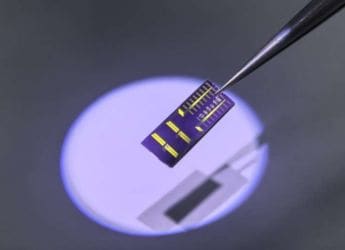- Home
- Science
- Science News
- New Lip Sync Technology Uses Audio Clips to Generate Realistic Video
New Lip-Sync Technology Uses Audio Clips to Generate Realistic Video

Scientists have developed new computer algorithms that can turn audio clips into a realistic, lip-synced video of the person speaking those words.
The researchers successfully generated highly-realistic video of former US President Barack Obama talking about terrorism, fatherhood, job creation and other topics, using audio clips of those speeches and existing weekly video addresses that were originally on a different topic.
"These type of results have never been shown before," said Ira Kemelmacher-Shlizerman, an assistant professor at the University of Washington (UW) in the US.
"Realistic audio-to-video conversion has practical applications like improving video conferencing for meetings, as well as futuristic ones such as being able to hold a conversation with a historical figure in virtual reality by creating visuals just from audio," said Kemelmacher-Shlizerman.
In a visual form of lip-syncing, the system converts audio files of an individual's speech into realistic mouth shapes, which are then grafted onto and blended with the head of that person from another existing video.
The team chose Obama because the machine learning technique needs available video of the person to learn from, and there were hours of presidential videos in the public domain.
"In the future video, chat tools like Skype or Messenger will enable anyone to collect videos that could be used to train computer models," Kemelmacher-Shlizerman said.
Because streaming audio over the Internet takes up far less bandwidth than video, the new system has the potential to end video chats that are constantly timing out from poor connections.
"When you watch Skype or Google Hangouts, often the connection is stuttery and low-resolution and really unpleasant, but often the audio is pretty good," said Steve Seitz, professor at UW.
"So if you could use the audio to produce much higher-quality video, that would be terrific," he said.
By reversing the process - feeding video into the network instead of just audio - the team could also potentially develop algorithms that could detect whether a video is real or manufactured, researchers said.
The new machine learning tool makes significant progress in overcoming what is known as the "uncanny valley" problem, which has dogged efforts to create realistic video from audio.
When synthesised human likenesses appear to be almost real - but still manage to somehow miss the mark - people find them creepy or off-putting.
"People are particularly sensitive to any areas of your mouth that don't look realistic," said Supasorn Suwajanakorn, a doctoral graduate at UW's Allen School of Computer Science & Engineering.
"If you do not render teeth right or the chin moves at the wrong time, people can spot it right away and it is going to look fake. So you have to render the mouth region perfectly to get beyond the uncanny valley," Suwajanakorn said.
Get your daily dose of tech news, reviews, and insights, in under 80 characters on Gadgets 360 Turbo. Connect with fellow tech lovers on our Forum. Follow us on X, Facebook, WhatsApp, Threads and Google News for instant updates. Catch all the action on our YouTube channel.
Related Stories
- Samsung Galaxy Unpacked 2025
- ChatGPT
- Redmi Note 14 Pro+
- iPhone 16
- Apple Vision Pro
- Oneplus 12
- OnePlus Nord CE 3 Lite 5G
- iPhone 13
- Xiaomi 14 Pro
- Oppo Find N3
- Tecno Spark Go (2023)
- Realme V30
- Best Phones Under 25000
- Samsung Galaxy S24 Series
- Cryptocurrency
- iQoo 12
- Samsung Galaxy S24 Ultra
- Giottus
- Samsung Galaxy Z Flip 5
- Apple 'Scary Fast'
- Housefull 5
- GoPro Hero 12 Black Review
- Invincible Season 2
- JioGlass
- HD Ready TV
- Laptop Under 50000
- Smartwatch Under 10000
- Latest Mobile Phones
- Compare Phones
- OnePlus 15R
- Realme Narzo 90x 5G
- Realme Narzo 90 5G
- Vivo S50 Pro Mini
- Vivo S50
- OPPO Reno 15c
- Redmi Note 15 5G
- Redmi Note 15 Pro 5G
- Asus ProArt P16
- MacBook Pro 14-inch (M5, 2025)
- Infinix Xpad Edge
- OnePlus Pad Go 2
- OnePlus Watch Lite
- Just Corseca Skywatch Pro
- Acerpure Nitro Z Series 100-inch QLED TV
- Samsung 43 Inch LED Ultra HD (4K) Smart TV (UA43UE81AFULXL)
- Asus ROG Ally
- Nintendo Switch Lite
- Haier 1.6 Ton 5 Star Inverter Split AC (HSU19G-MZAID5BN-INV)
- Haier 1.6 Ton 5 Star Inverter Split AC (HSU19G-MZAIM5BN-INV)

















